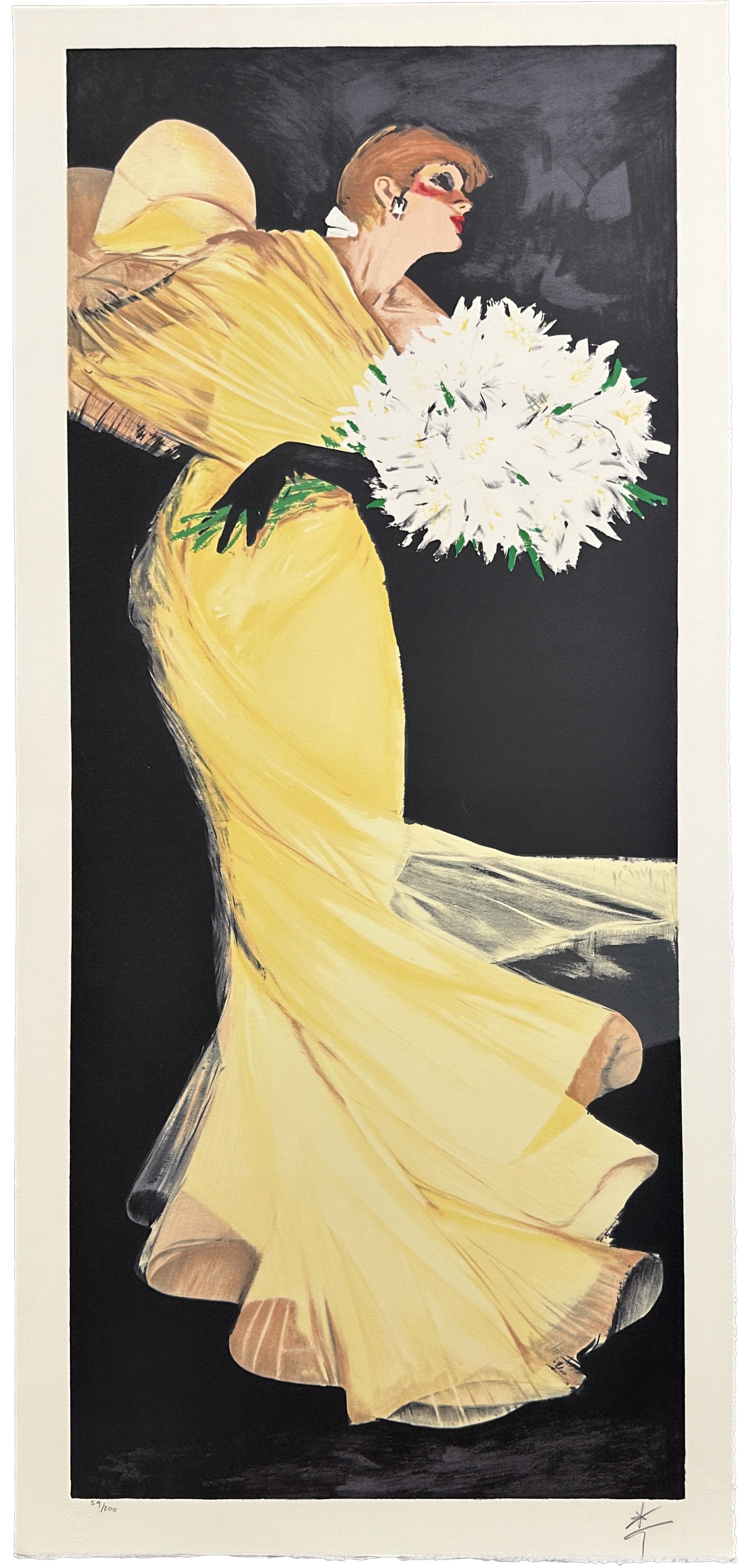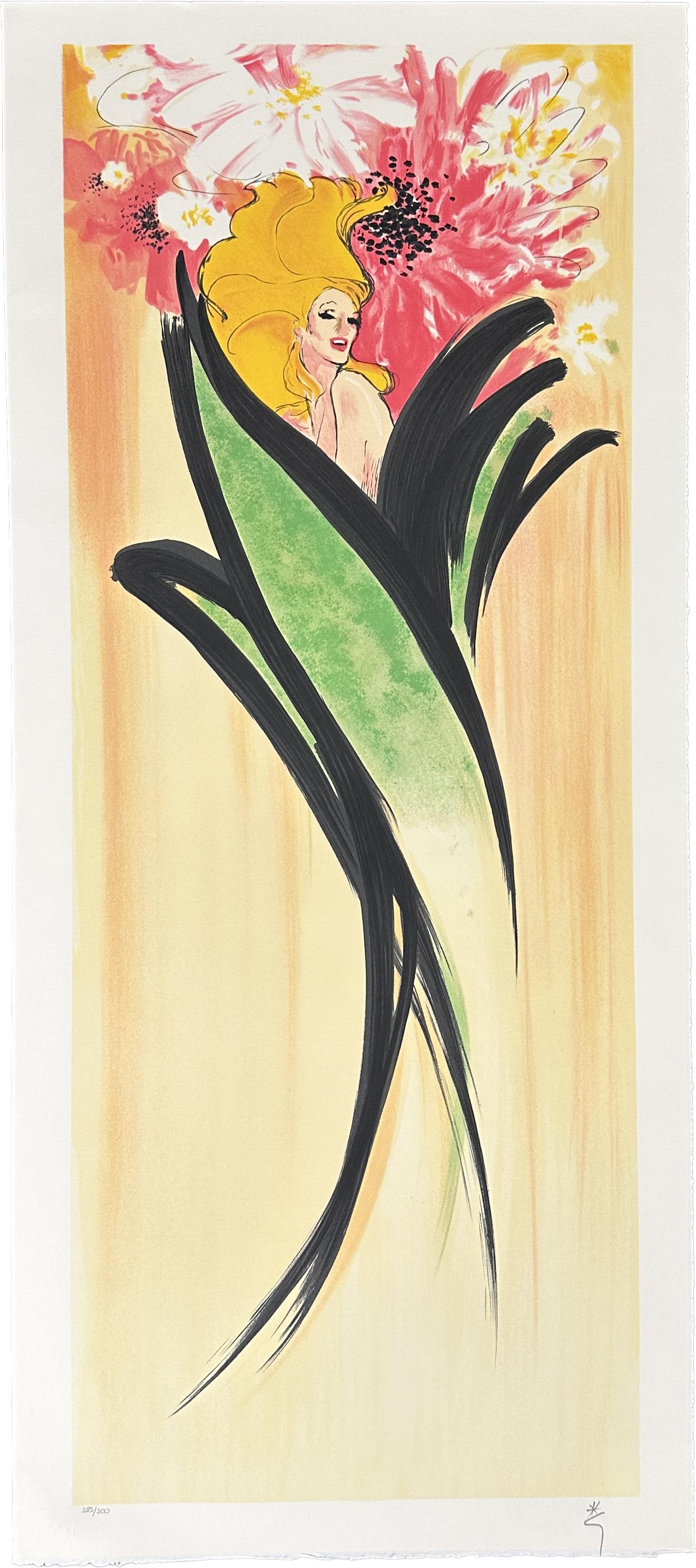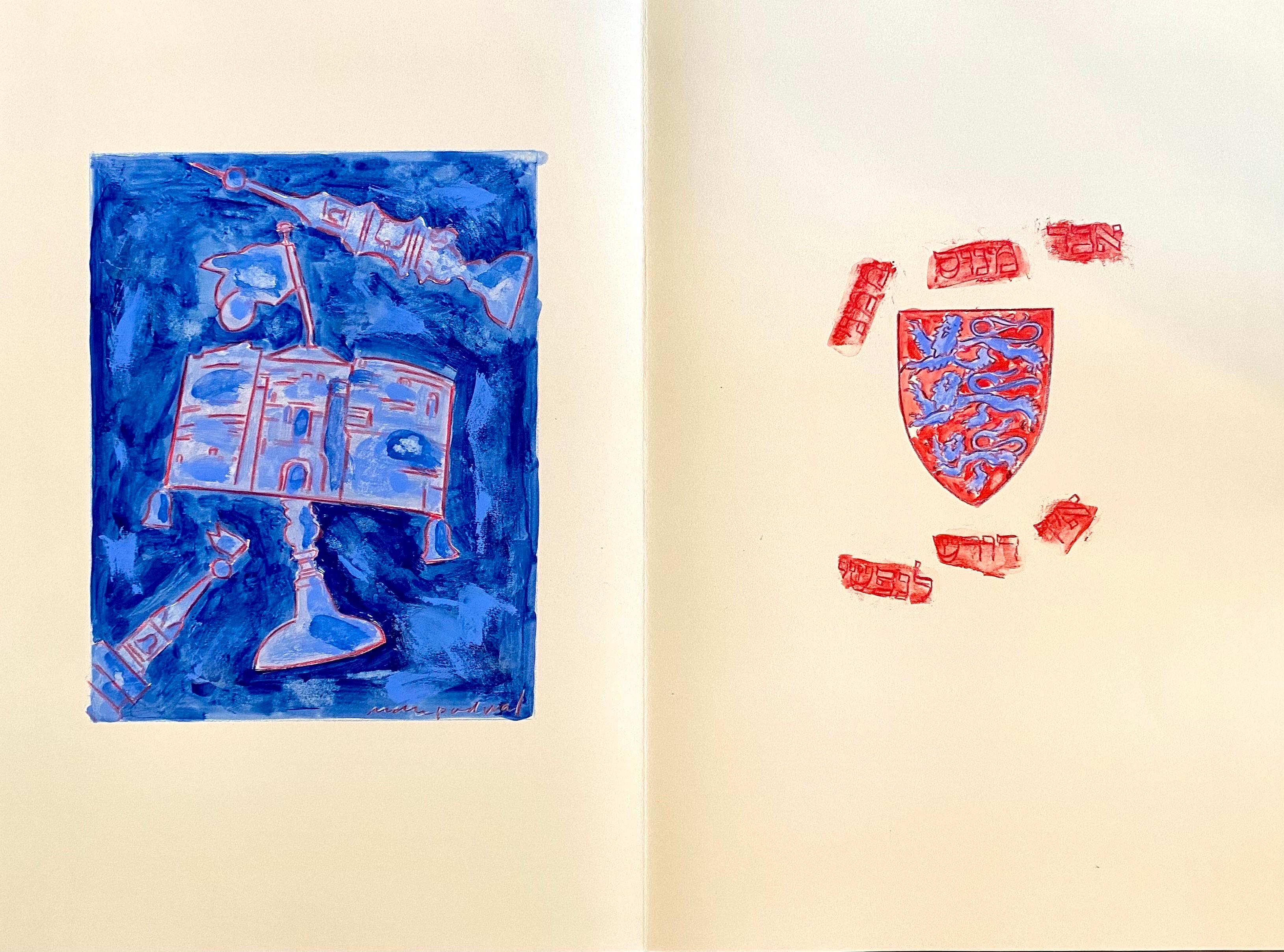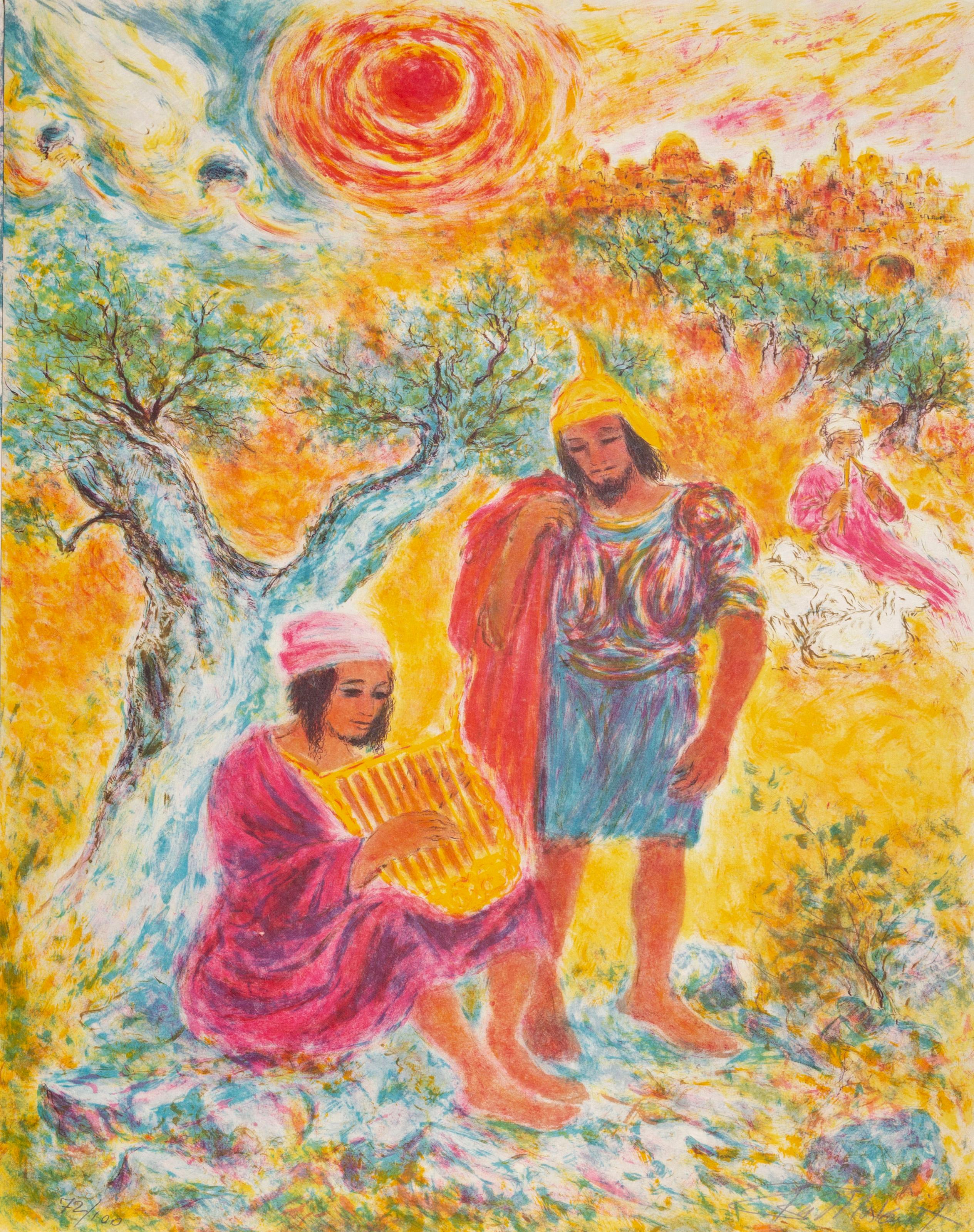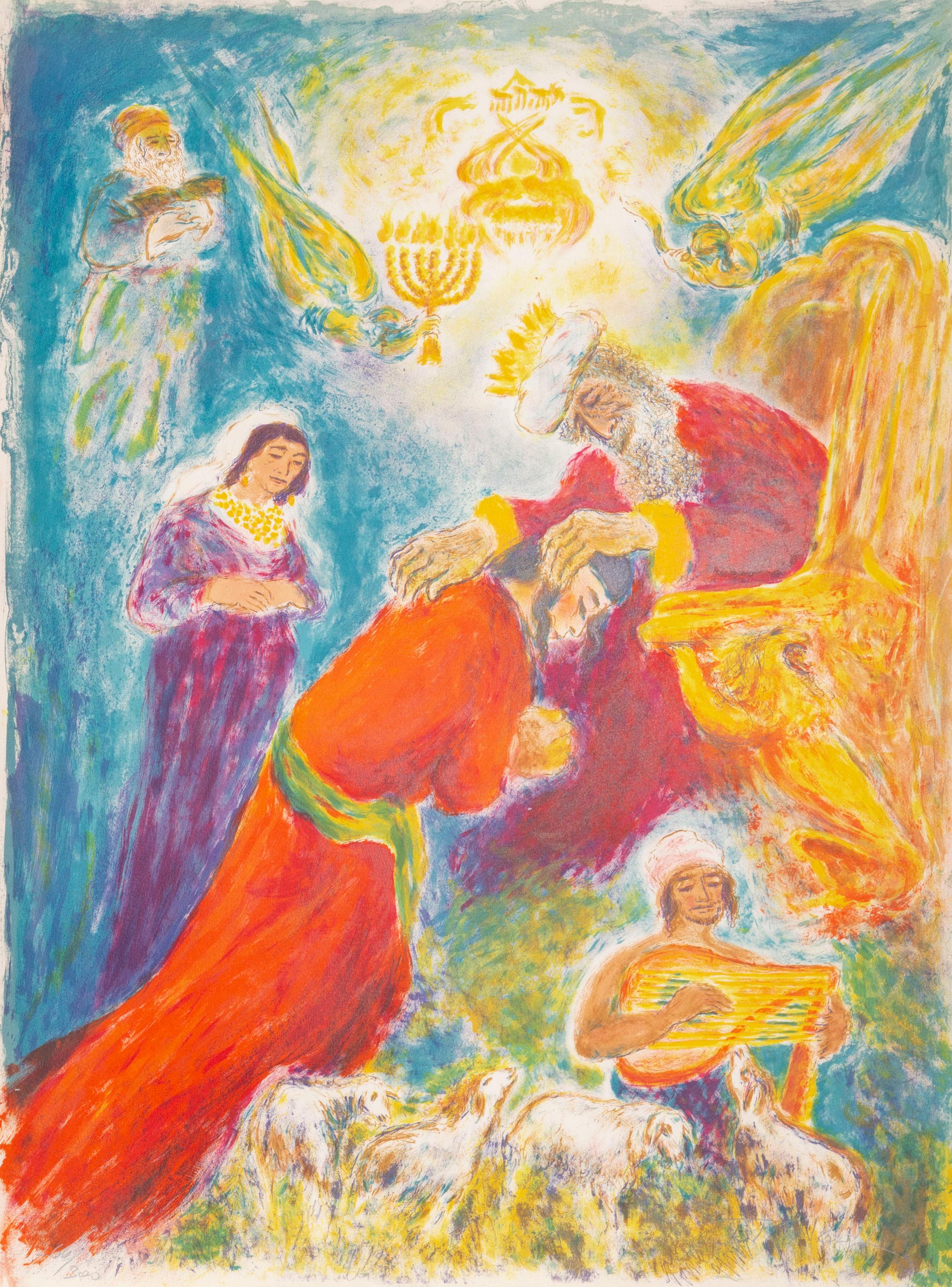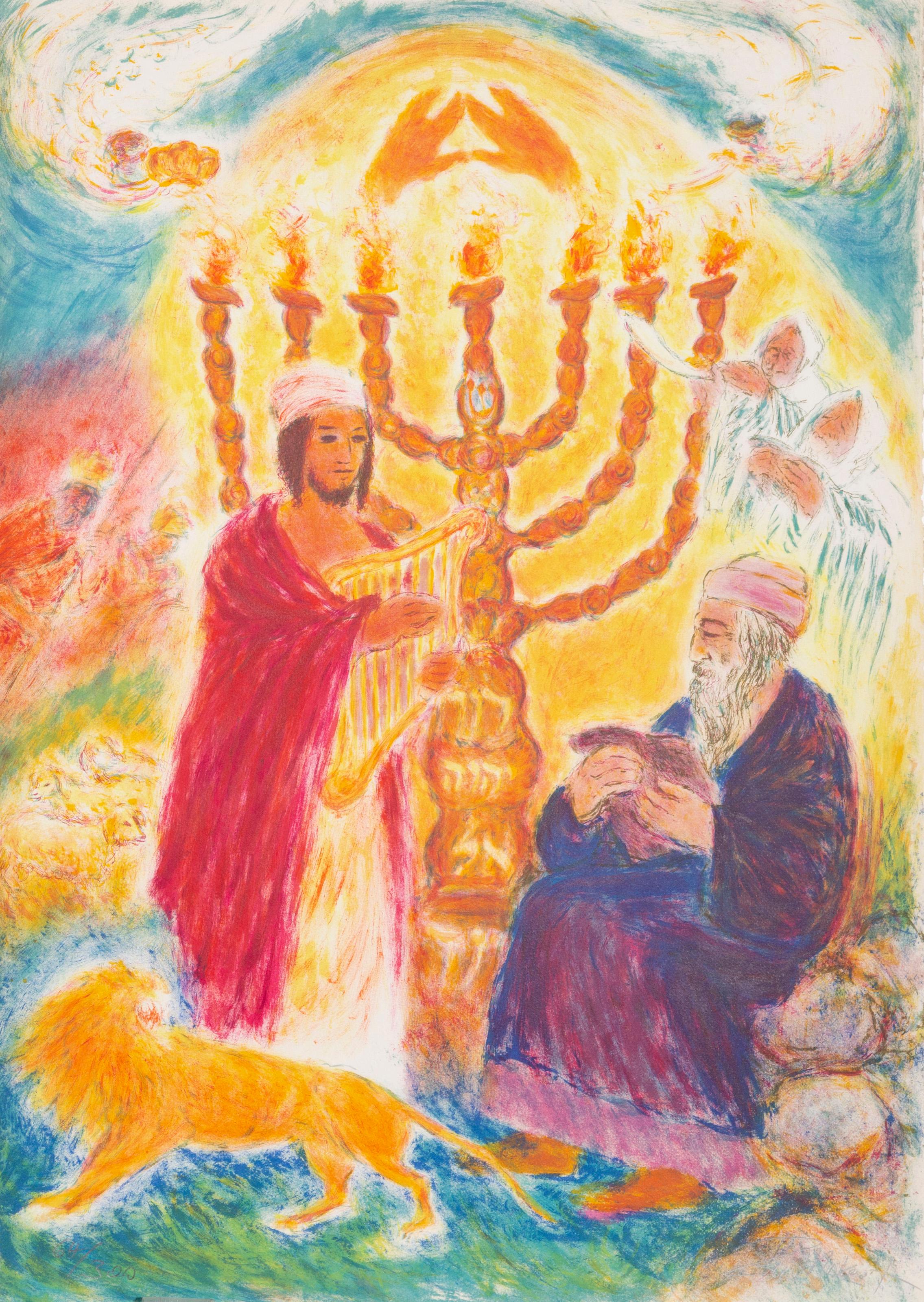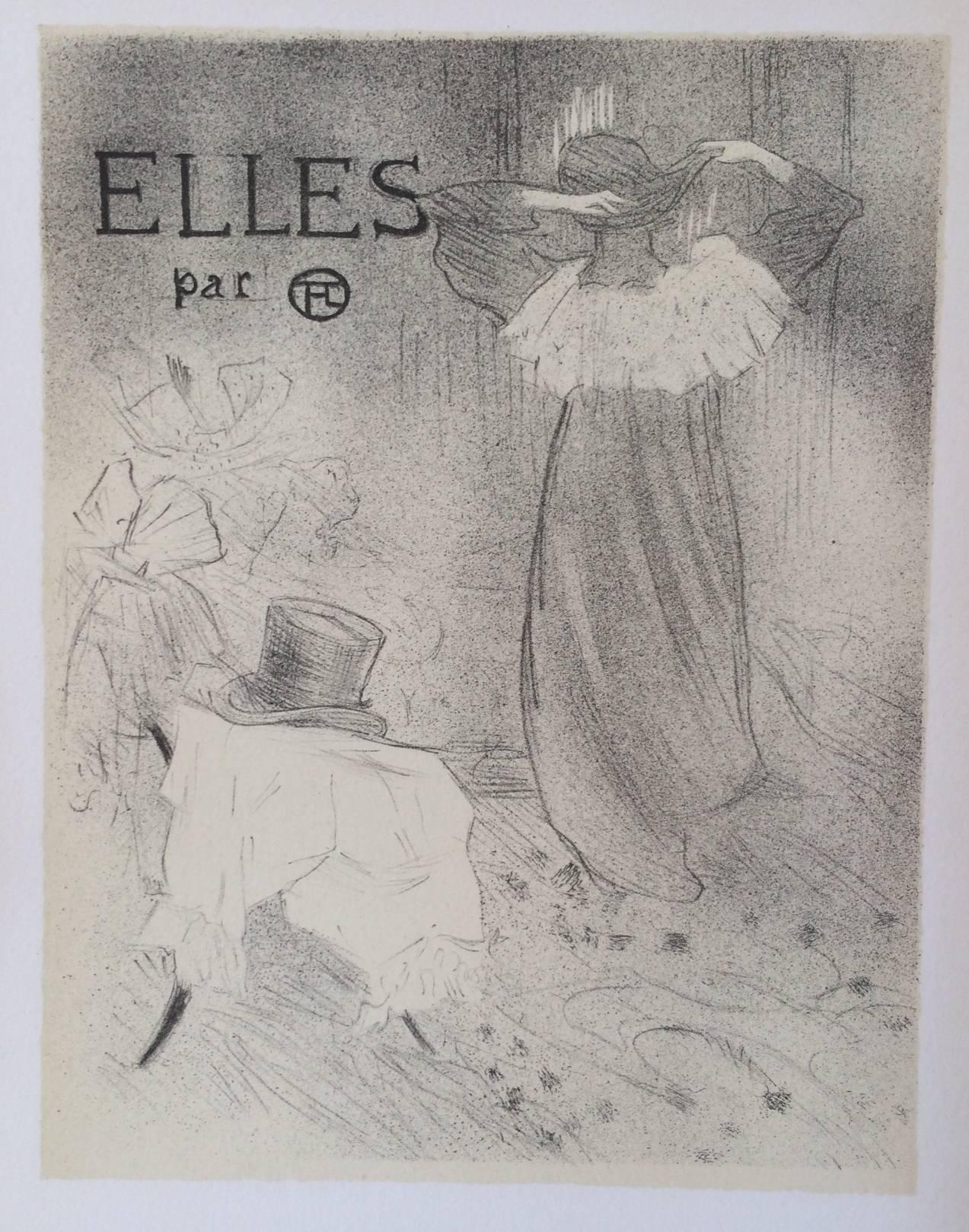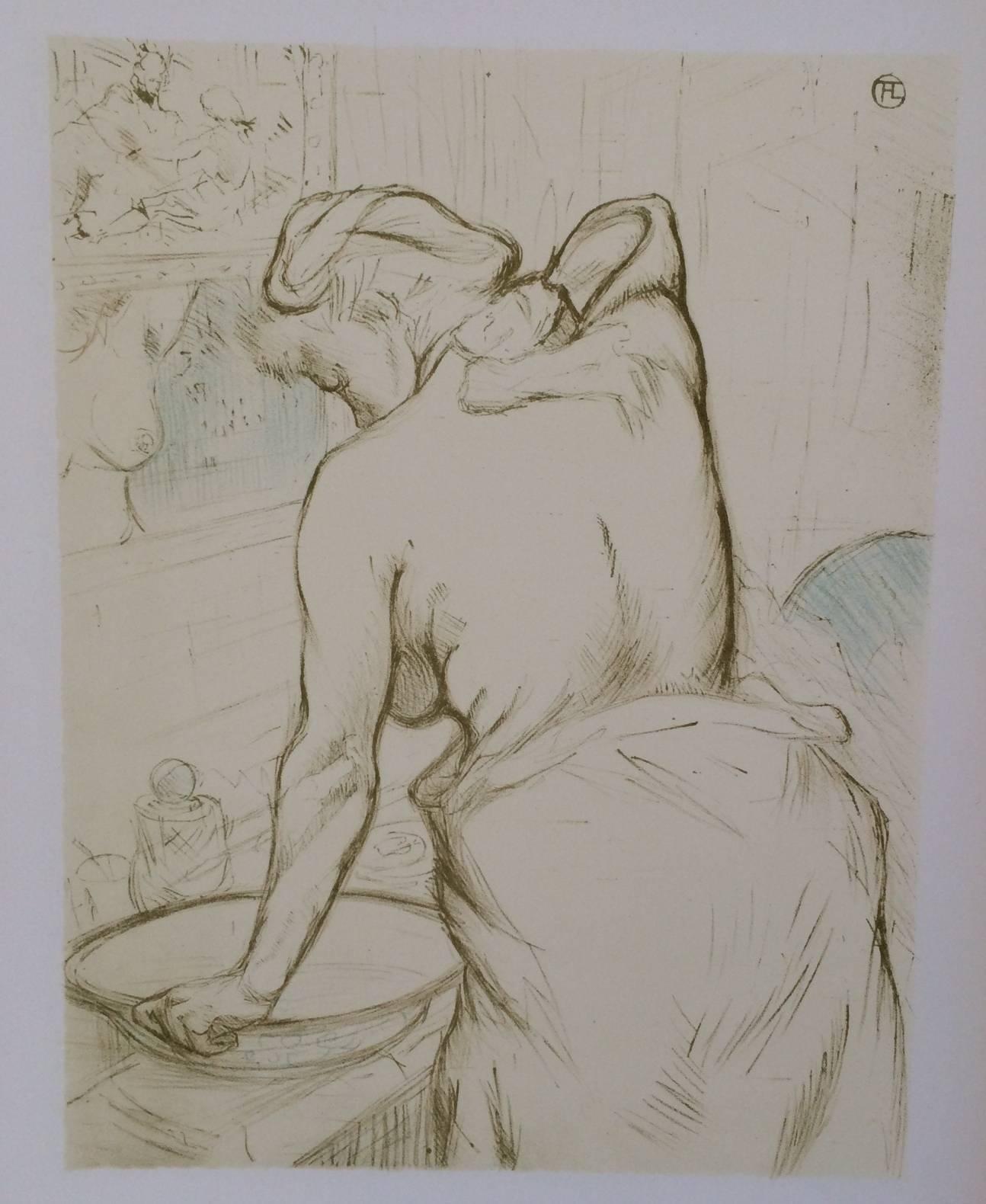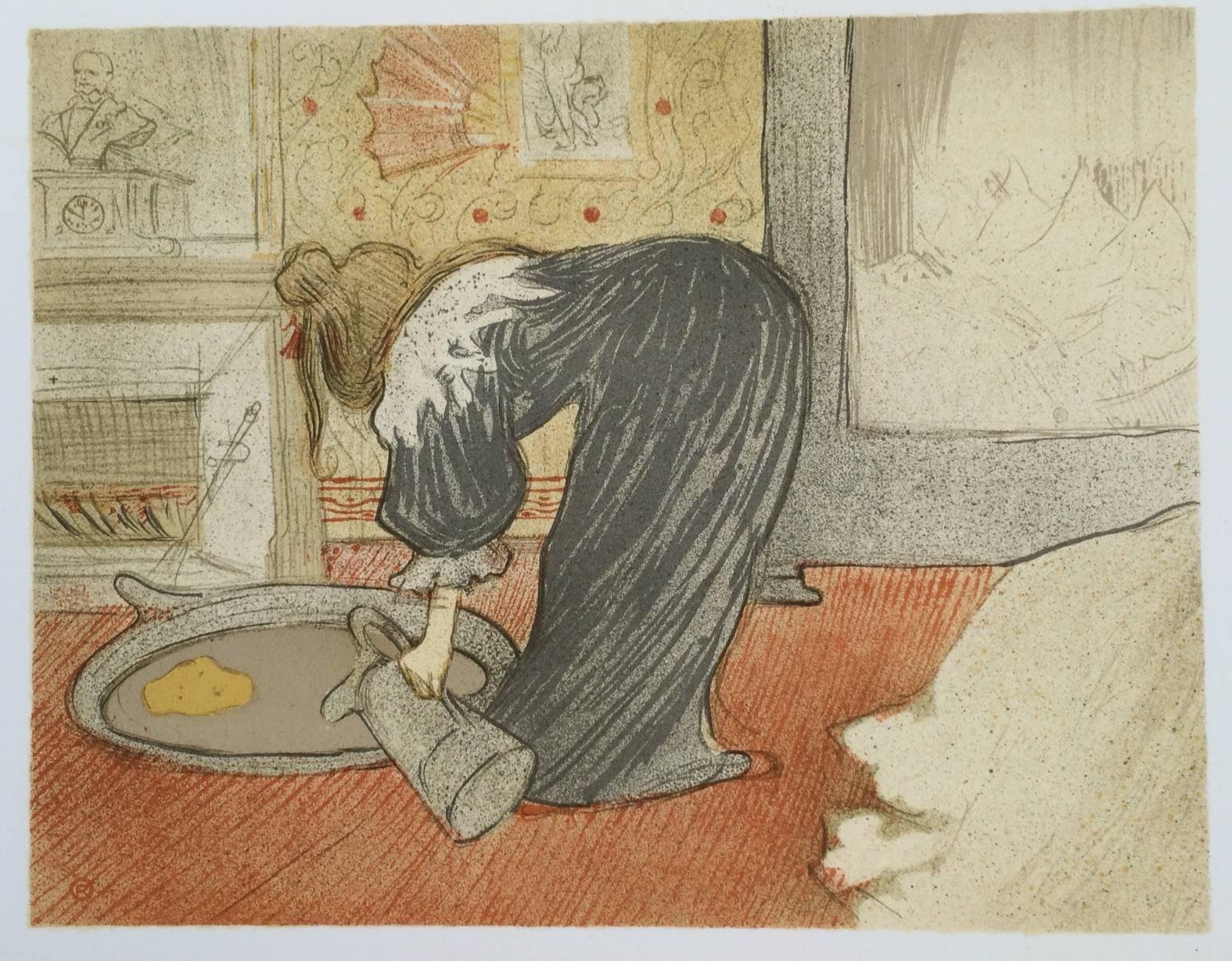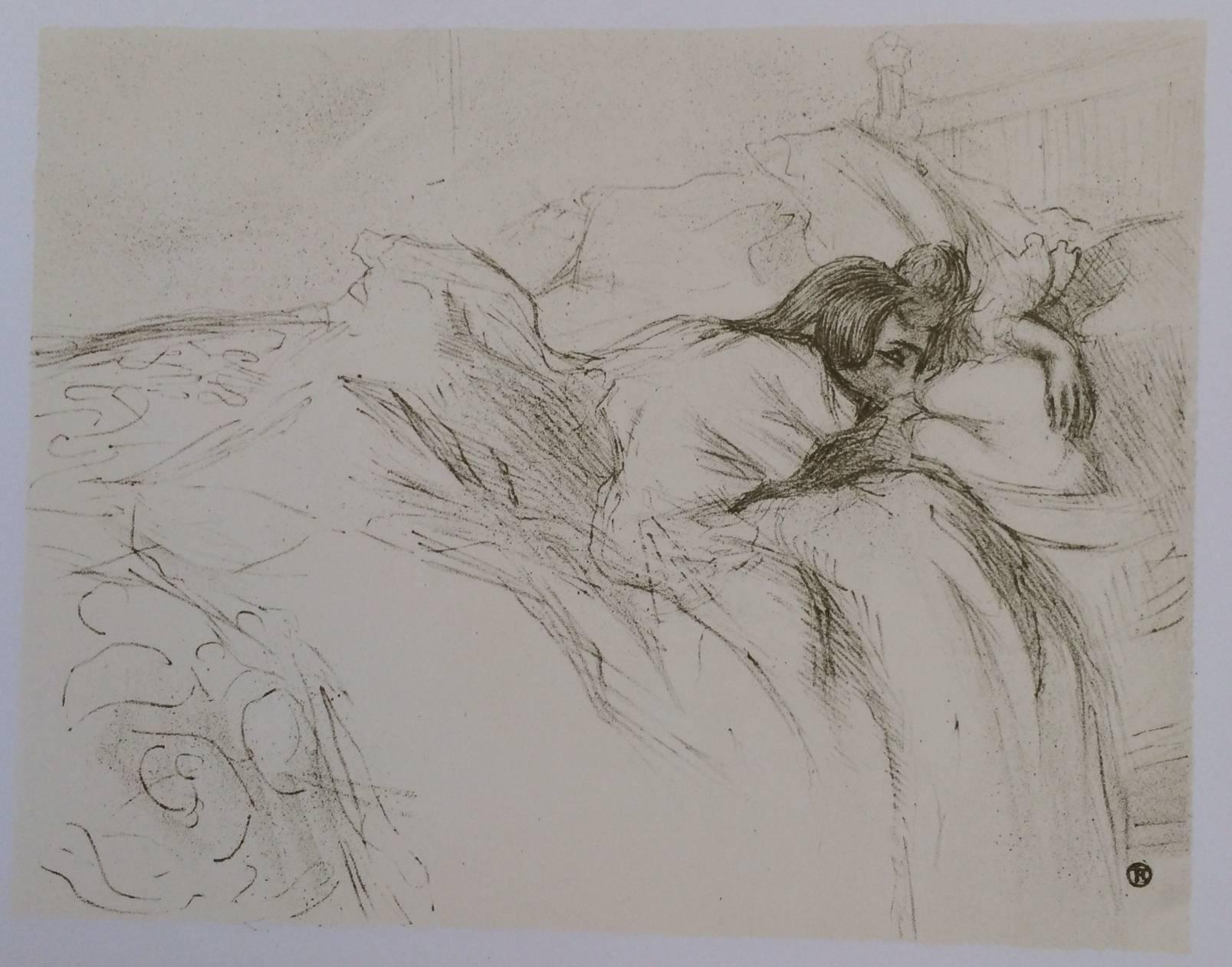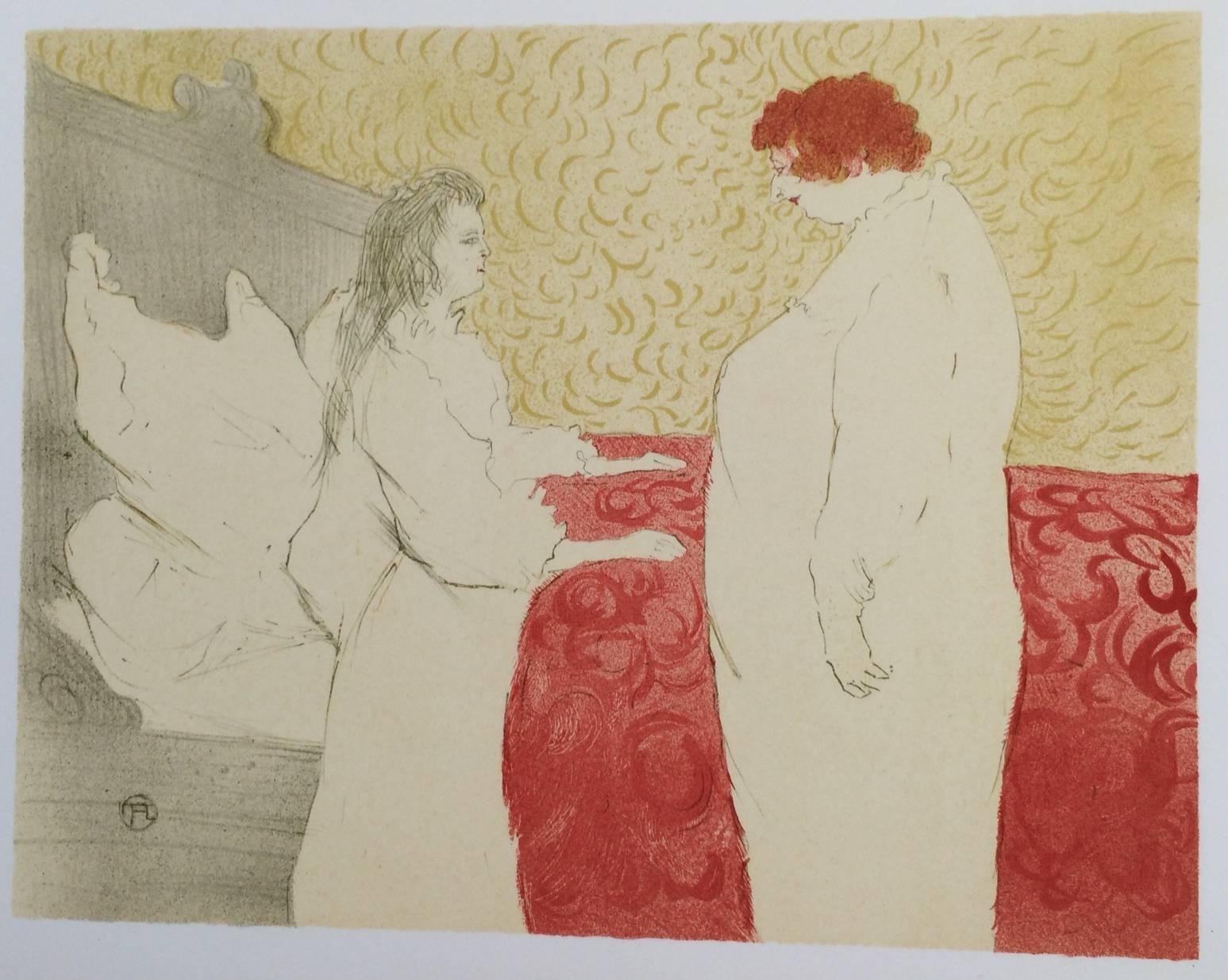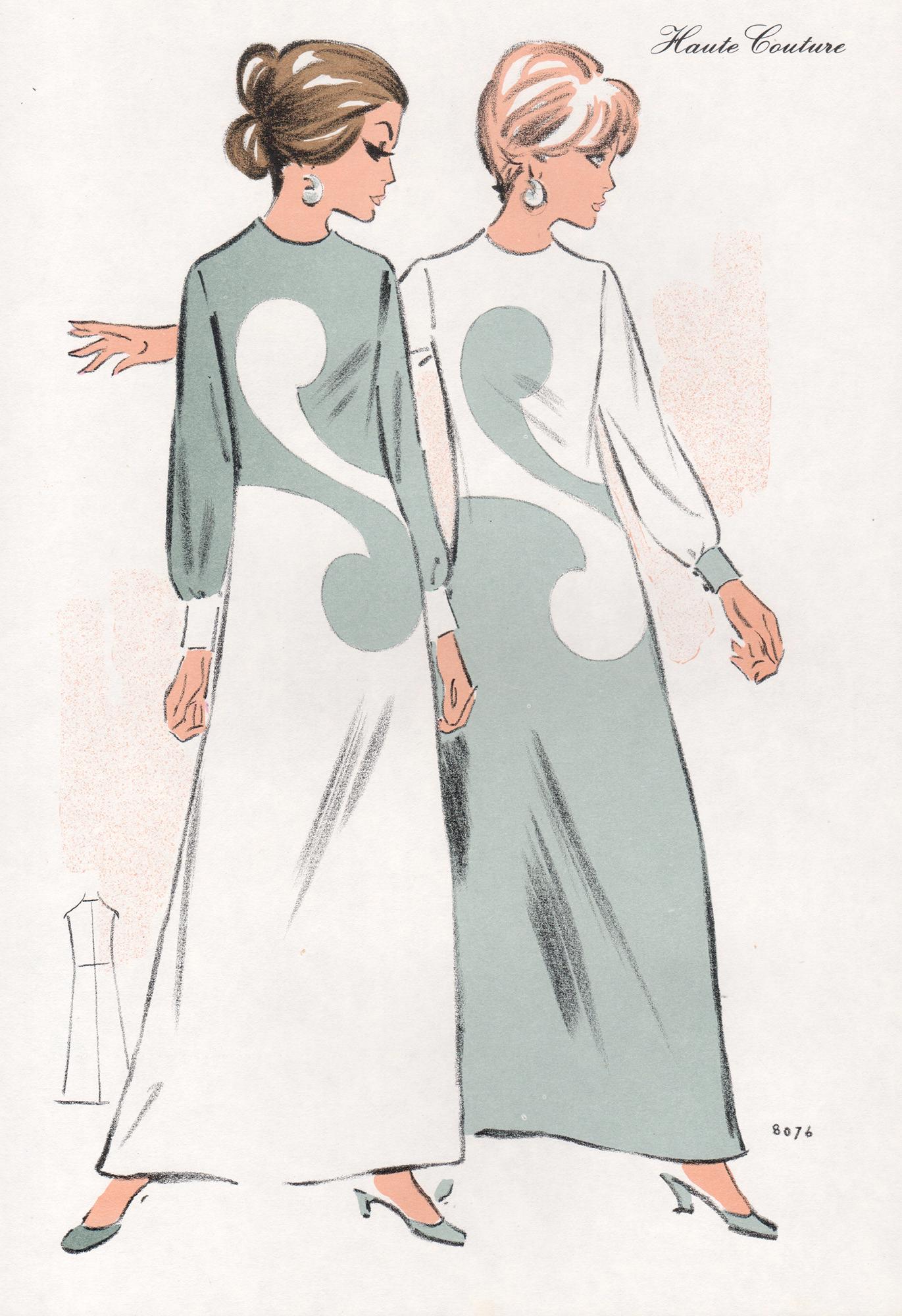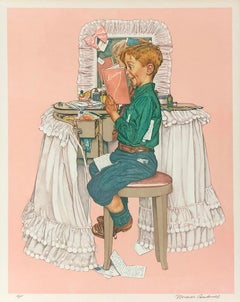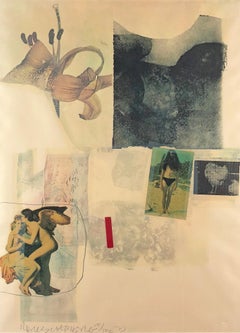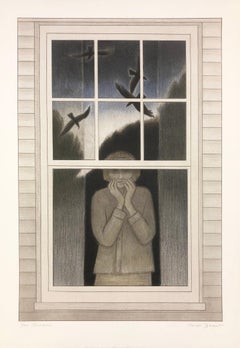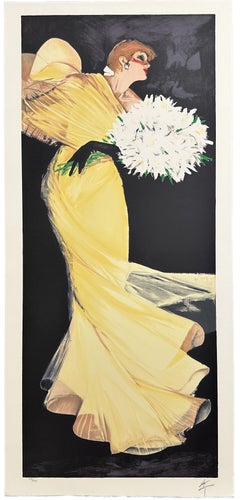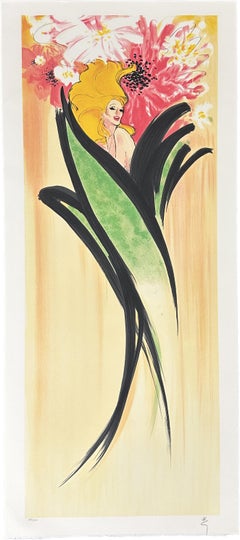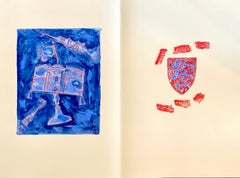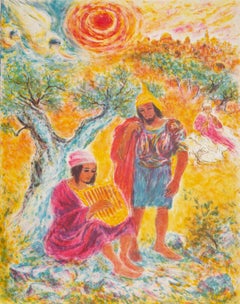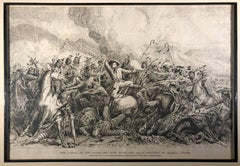
The Battle of Little Big Horn River (Custer Massacre, June 25 1876)
View Similar Items
Want more images or videos?
Request additional images or videos from the seller
1 of 7
William De La Montagne CaryThe Battle of Little Big Horn River (Custer Massacre, June 25 1876)1876
1876
About the Item
- Creator:William De La Montagne Cary (1840 - 1922, American)
- Creation Year:1876
- Dimensions:Height: 18 in (45.72 cm)Width: 24 in (60.96 cm)
- Medium:
- Period:
- Condition:Please call or email if you have any questions or would like to see more detailed images.
- Gallery Location:Missouri, MO
- Reference Number:1stDibs: LU74732243733
About the Seller
5.0
Vetted Professional Seller
Every seller passes strict standards for authenticity and reliability
Established in 1970
1stDibs seller since 2017
153 sales on 1stDibs
Typical response time: 17 hours
Authenticity Guarantee
In the unlikely event there’s an issue with an item’s authenticity, contact us within 1 year for a full refund. DetailsMoney-Back Guarantee
If your item is not as described, is damaged in transit, or does not arrive, contact us within 7 days for a full refund. Details24-Hour Cancellation
You have a 24-hour grace period in which to reconsider your purchase, with no questions asked.Vetted Professional Sellers
Our world-class sellers must adhere to strict standards for service and quality, maintaining the integrity of our listings.Price-Match Guarantee
If you find that a seller listed the same item for a lower price elsewhere, we’ll match it.Trusted Global Delivery
Our best-in-class carrier network provides specialized shipping options worldwide, including custom delivery.More From This Seller
View AllAfter the Painting of Secrets (Sister's Diary)
By After Norman Rockwell
Located in Missouri, MO
*This color lithograph was done as a lithographic reproduction of Rockwell's original painting that was used for the cover of a 1942 Saturday Evening Post.
After Norman Rockwell...
Category
Late 20th Century American Modern Figurative Prints
Materials
Lithograph
Le Christ a l'Horloge, Paris
By Marc Chagall
Located in Missouri, MO
Marc Chagall
"Le Christ a l'Horloge, Paris" (Christ in the Clock) 1957 (M. 196)
Color Lithograph on Arches Wove Paper
Signed in Pencil "Marc Chagall" Lower Right
Initialed "H.C." (Hors Commerce) Lower Left, aside from numbered edition of 90
*Floated in Gold Frame with Linen Matting, UV Plexiglass
Sheet Size: 18 3/4 x 14 3/4 inches (47.5 cm x 38 cm)
Image Size: 9 3/4 x 8 1/2 inches
Framed Size: 28.5 x 24.25 inches
Marc Chagall was a man of keen intelligence, a shrewd observer of the contemporary scene, with a great sympathy for human suffering. He was born on July 7, 1887 in Vitebsk, Russia; his original name was Moishe Shagal (Segal), but when he became a foremost member of the Ecole de Paris, he adopted French citizenship and the French spelling of his name. Vitebsk was a good-sized Russian town of over 60,000, not a shtetl. His father supported a wife and eight children as a worker in a herring-pickling plant.
Sheltered by the Jewish commandment against graven images, the young Chagall never saw so much as a drawing until, one day, he watched a schoolmate copying a magazine illustration. He was ridiculed for his astonishment, but he began copying and improvising from magazines. Both Chagall's parents reluctantly agreed to let him study with Yehuda Pen, a Jewish artist in Vitebsk. Later, in 1906, they allowed their son to study in St. Petersburg, where he was exposed to Russian Iconography and folk art. At that time, Jews could leave the Pale only for business and employment and were required to carry a permit. Chagall, who was in St. Petersburg without a permit, was imprisoned briefly.
His first wife, Bella Rosenfeld, was a product of a rich cultivated and intellectual group of Jews in Vitebsk. Chagall was made commissar for the arts for the area, charged with directing its cultural life and establishing an art school. Russian folklore, peasant life and landscapes persisted in his work all his life. In 1910 a rich patron, a lawyer named Vinaver, staked him to a crucial trip to Paris, where young artists were revolutionizing art. He also sent him a handsome allowance of 125 francs (in those days about $24) each month. Chagall rejected cubism, fauvism and futurism, but remained in Paris. He found a studio near Montparnasse in a famous twelve-sided wooden structure divided into wedge-shaped rooms. Chaim Soutine, a fellow Russian Jew, and Modigliani lived on the same floor. To Chagall's astonishment, he found himself heralded as one of the fathers of surrealism. In 1923, a delegation of Max Ernst, Paul Eluard and Gala (later Salvador Dali's wife) actually knelt before Chagall, begging him to join their ranks. He refused.
To understand Chagall's work, it is necessary to know that he was born a Hasidic Jew, heir to mysticism and a world of the spirit, steeped in Jewish lore and reared in the Yiddish language. The Hasidim had a special feeling for animals, which they tried not to overburden. In the mysterious world of Kabbala and fantastic ancient legends of Chagall's youth, the imaginary was as important as the real. His extraordinary use of color also grew out of his dream world; he did not use color realistically, but for emotional effect and to serve the needs of his design. Most of his favorite themes, though superficially light and trivial, mask dark and somber thoughts. The circus he views as a mirror of life; the crucifixion as a tragic theme, used as a parallel to the historic Jewish condition, but he is perhaps best known for the rapturous lovers he painted all his life. His love of music is a theme that runs through his paintings.
After a brief period in Berlin, Chagall, Bella and their young daughter, Ida, moved to Paris and in 1937 they assumed French citizenship. When France fell, Chagall accepted an invitation from the Museum of Modern Art to immigrate to the United States. He was arrested and imprisoned in Marseilles for a short time, but was still able to immigrate with his family. The Nazi onslaught caught Chagall in Vichy, France, preoccupied with his work. He was loath to leave; his friend Varian Fry rescued him from a police roundup of Jews in Marseille, and packed him, his family and 3500 lbs. of his art works on board a transatlantic ship. The day before he arrived in New York City, June 23, 1941, the Nazis attacked Russia. The United States provided a wartime haven and a climate of liberty for Chagall. In America he spent the war years designing large backdrops for the Ballet.
Bella died suddenly in the United States of a viral infection in September 1944 while summering in upstate New York. He rushed her to a hospital in the Adirondacks, where, hampered by his fragmentary English, they were turned away with the excuse that the hour was too late. The next day she died.
He waited for three years after the war before returning to France. With him went a slender married English girl, Virginia Haggard MacNeil; Chagall fell in love with her and they had a son, David. After seven years she ran off with an indigent photographer. It was an immense blow to Chagall's ego, but soon after, he met Valentine Brodsky, a Russian divorcee designing millinery in London (he called her Fava). She cared for him during the days of his immense fame and glory. They returned to France, to a home and studio in rustic Vence. Chagall loved the country and every day walked through the orchards, terraces, etc. before he went to work.
Chagall died on March 28, 1985 in the south of France. His heirs negotiated an arrangement with the French state allowing them to pay most of their inheritance taxes in works of art. The heirs owed about $30 million to the French government; roughly $23 million of that amount was deemed payable in artworks. Chagall's daughter, Ida and his widow approved the arrangement.
Written and submitted by Jean Ershler Schatz, artist and researcher from Laguna Woods, California.
Sources:
Hannah Grad Goodman in Homage to Chagall in Hadassah Magazine, June 1985
Jack Kroll in Newsweek, April 8, 1985
Andrea Jolles in National Jewish Monthly Magazine, May 1985
Michael Gibson...
Category
1950s Modern Figurative Prints
Materials
Lithograph
Price Upon Request
Untitled
By Robert Rauschenberg
Located in Missouri, MO
Robert Rauschenberg
"Untitled" 1973
Medium: Screenprint and collage in colors
Printed and Published by Styria Studios, New York and with their blindstamp
Signed and Numbered 71/100
Images Size: approx. 28 x 20 inches
Framed Size: approx. 34 x 26 inches
Born with the name Milton Rauschenberg in Port Arthur, Texas, Robert Rauschenberg became one of the major artists of his generation and is credited along with Jasper Johns of breaking the stronghold of Abstract Expressionism*.
Rauschenberg was known for assemblage*, conceptualist methods, printmaking, and willingness to experiment with non-artistic materials--all innovations that anticipated later movements such as Pop Art*, Conceptualism*, and Minimalism*.
In May, 1999, ARTNews magazine featured him as one of the top twenty-five influential western artists, stating: "His irreverent notions of what an artwork could be gained him the status of an enfant terrible. . .Rauschenberg pushed the viewer to accept the unexpected."
He has said that he believes painting should relate to both life and art and that he wants is artwork to be the intermediary between the two.
He received much formal art education beginning with the Kansas City Art Institute in 1947 and 1948. He studied briefly in Paris at the Academie Julian*, and from 1948 to 1949 was at Black Mountain College* in North Carolina with Josef and Anni Albers. This period was followed by several years attendance at the Art Students League* in New York City with Morris Kantor and Vaclav Vytlacil. In 1951, he exhibited all white and black paintings incorporating viewer participation through the shadows they cast on the works.
At Black Mountain College, he had met composer, John Cage, and dancer- choreographer, Merce Cunningham, for whom he worked in his company as a designer, manager, and performer. Frequently he scoured the area in which they were performing for 'unusual' objects such as tires, old radios...
Category
1970s Abstract Expressionist Figurative Prints
Materials
Lithograph
Price Upon Request
The Dream
By Will Barnet
Located in Missouri, MO
Will Barnet
"The Dream" 2002
Color Lithograph on Somerset Velvet White Paper
Signed and Titled
Ed. 250
Will Barnet, Visionary Artist, Dies at 101
By KEN JOH...
Category
Early 2000s Modern Figurative Prints
Materials
Lithograph
Price Upon Request
Charwomen in Theater
By After Norman Rockwell
Located in Missouri, MO
Norman Rockwell
"Charwomen in Theater" 1946
Lithograph
Signed in Pencil Lower Right
Numbered Lower Left 160/200
Site Size: approx 26 x 20 inches
Framed Size: approx. 34.5 x 28.5 inc...
Category
Mid-20th Century American Realist Figurative Prints
Materials
Lithograph
Price Upon Request
Good Times on the Old Plantation
By Currier & Ives
Located in Missouri, MO
Currier & Ives (Publishers)
"Good times on the Old Plantation" 1872
Handcolored Lithograph
Size Height 10 in.; Width 13.9 in.
Framed Size: approx 16 x 19.5
Category
1870s Victorian Figurative Prints
Materials
Lithograph
You May Also Like
René Gruau Les Pivonies The Peony Limited Edition Lithograph
By René Gruau
Located in Rochester Hills, MI
René Gruau
LES PIVOINES - THE PEONY - 1998
Print - Lithograph on Arches Archival Paper 46'' x 22''
Edition: Signed in pencil and marked 59/300
Embossed with the printers stamp Mou...
Category
1990s Art Nouveau Figurative Prints
Materials
Lithograph
René Gruau Signed Lithograph LES IRIS Mourlot Limited Edition
By René Gruau
Located in Rochester Hills, MI
René Gruau
LES IRIS - 1998
Print -Lithograph on Arches Archival Paper
46'' x 20'' inches
Edition: signed in pencil, titled and marked 285/300
Embossed with the printers stamp M...
Category
1990s Art Nouveau Figurative Prints
Materials
Lithograph
Large Archival Pigment Print Judaica Lithograph Mark Podwal Jewish Hebrew Art
By Mark Podwal
Located in Surfside, FL
Mark Podwal (American, New York, born 1945)
"All This Has Come Upon Us"
Archival pigment print
Dimensions: 22 X 30 inches
Ritual Judaica spice box ...
Category
21st Century and Contemporary Neo-Expressionist Figurative Prints
Materials
Lithograph, Archival Pigment
Harp Player Beneath The Tree, Folk Art Lithograph by Ira Moskowitz
By Ira Moskowitz
Located in Long Island City, NY
Ira Moskowitz, Polish/American (1912 - 2001) - Harp Player Beneath The Tree, Portfolio: Song of Songs, Year: 1972, Medium: Lithograph, signed and numbered in pencil, Edition: 100, ...
Category
1970s Folk Art Figurative Prints
Materials
Lithograph
King Solomon, Folk Art Lithograph by Ira Moskowitz
By Ira Moskowitz
Located in Long Island City, NY
Ira Moskowitz, Polish/American (1912 - 2001) - King Solomon, Portfolio: Song of Songs, Year: 1972, Medium: Lithograph, signed and numbered in pencil, Edition: 300, Size: 30 x 21 in...
Category
1970s Folk Art Figurative Prints
Materials
Lithograph
Menorah, Folk Art Lithograph by Ira Moskowitz
By Ira Moskowitz
Located in Long Island City, NY
Ira Moskowitz, Polish/American (1912 - 2001) - Menorah, Portfolio: Song of Songs, Year: 1972, Medium: Lithograph, signed and numbered in pencil, Edition: 100, Size: 30 x 21 in. (76...
Category
1970s Folk Art Figurative Prints
Materials
Lithograph
